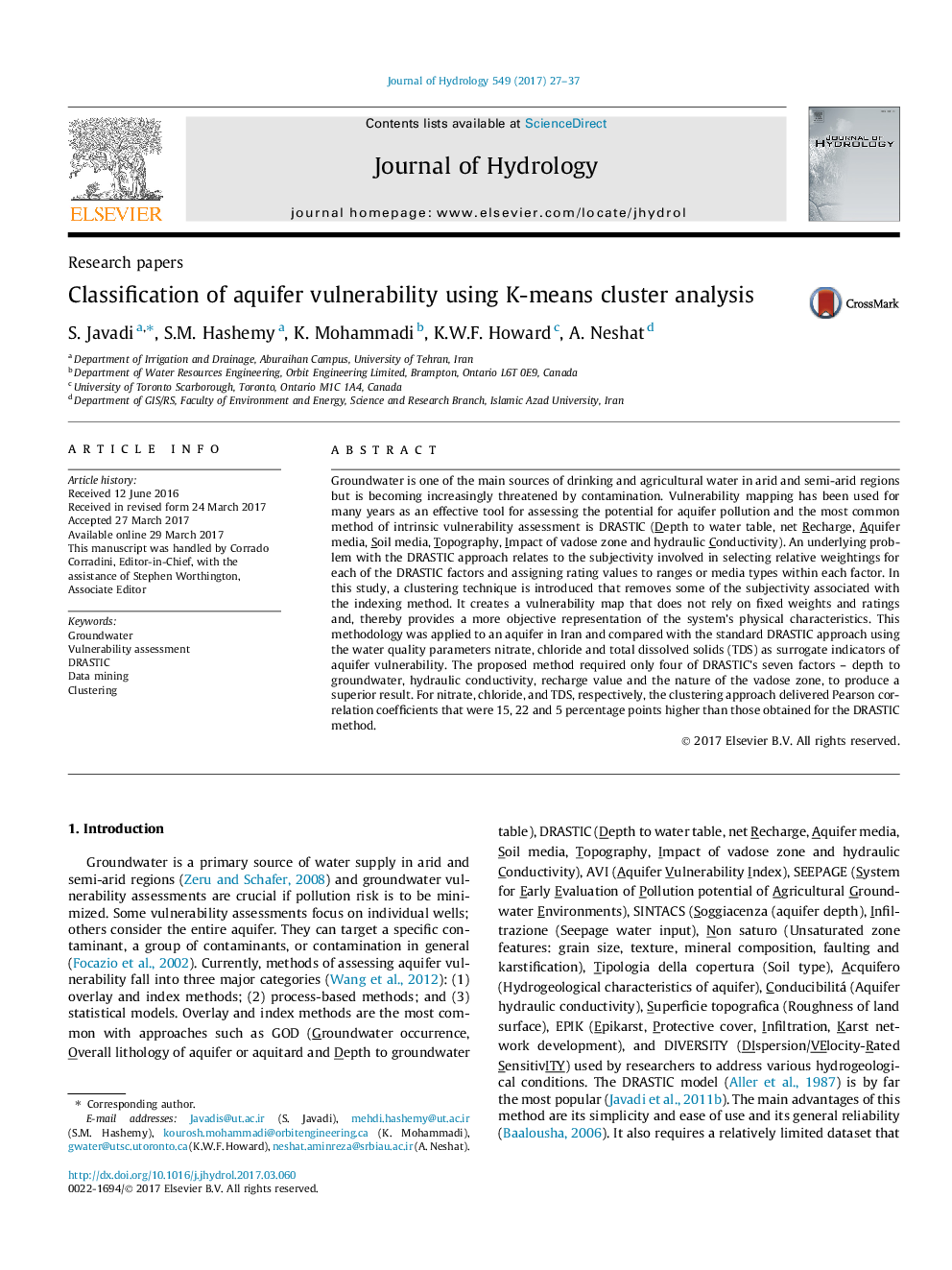| کد مقاله | کد نشریه | سال انتشار | مقاله انگلیسی | نسخه تمام متن |
|---|---|---|---|---|
| 5770964 | 1629905 | 2017 | 11 صفحه PDF | دانلود رایگان |

- Application of cluster analysis in groundwater classification.
- Vulnerability assessment using K-mean technique.
- Optimizing DRASTIC vulnerability assessment to use fewer parameters.
Groundwater is one of the main sources of drinking and agricultural water in arid and semi-arid regions but is becoming increasingly threatened by contamination. Vulnerability mapping has been used for many years as an effective tool for assessing the potential for aquifer pollution and the most common method of intrinsic vulnerability assessment is DRASTIC (Depth to water table, net Recharge, Aquifer media, Soil media, Topography, Impact of vadose zone and hydraulic Conductivity). An underlying problem with the DRASTIC approach relates to the subjectivity involved in selecting relative weightings for each of the DRASTIC factors and assigning rating values to ranges or media types within each factor. In this study, a clustering technique is introduced that removes some of the subjectivity associated with the indexing method. It creates a vulnerability map that does not rely on fixed weights and ratings and, thereby provides a more objective representation of the system's physical characteristics. This methodology was applied to an aquifer in Iran and compared with the standard DRASTIC approach using the water quality parameters nitrate, chloride and total dissolved solids (TDS) as surrogate indicators of aquifer vulnerability. The proposed method required only four of DRASTIC's seven factors - depth to groundwater, hydraulic conductivity, recharge value and the nature of the vadose zone, to produce a superior result. For nitrate, chloride, and TDS, respectively, the clustering approach delivered Pearson correlation coefficients that were 15, 22 and 5 percentage points higher than those obtained for the DRASTIC method.
Journal: Journal of Hydrology - Volume 549, June 2017, Pages 27-37